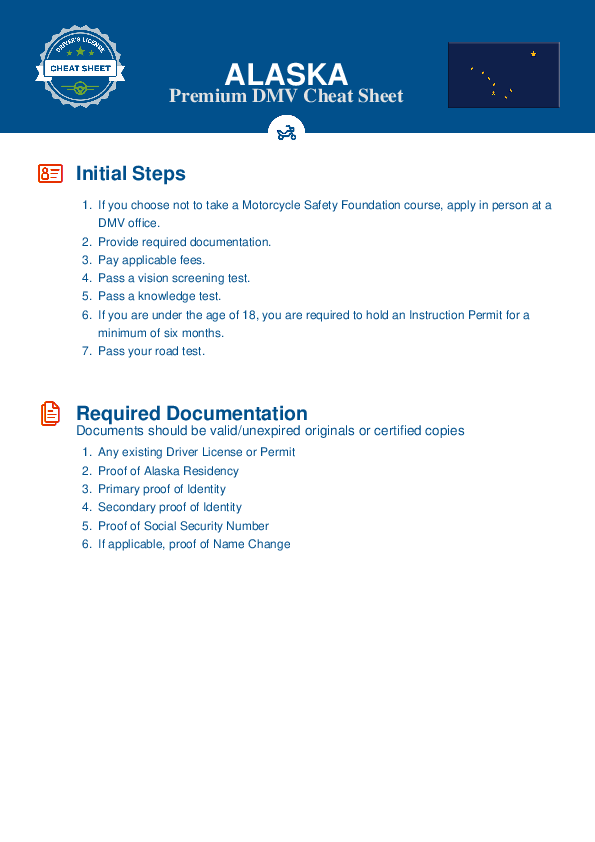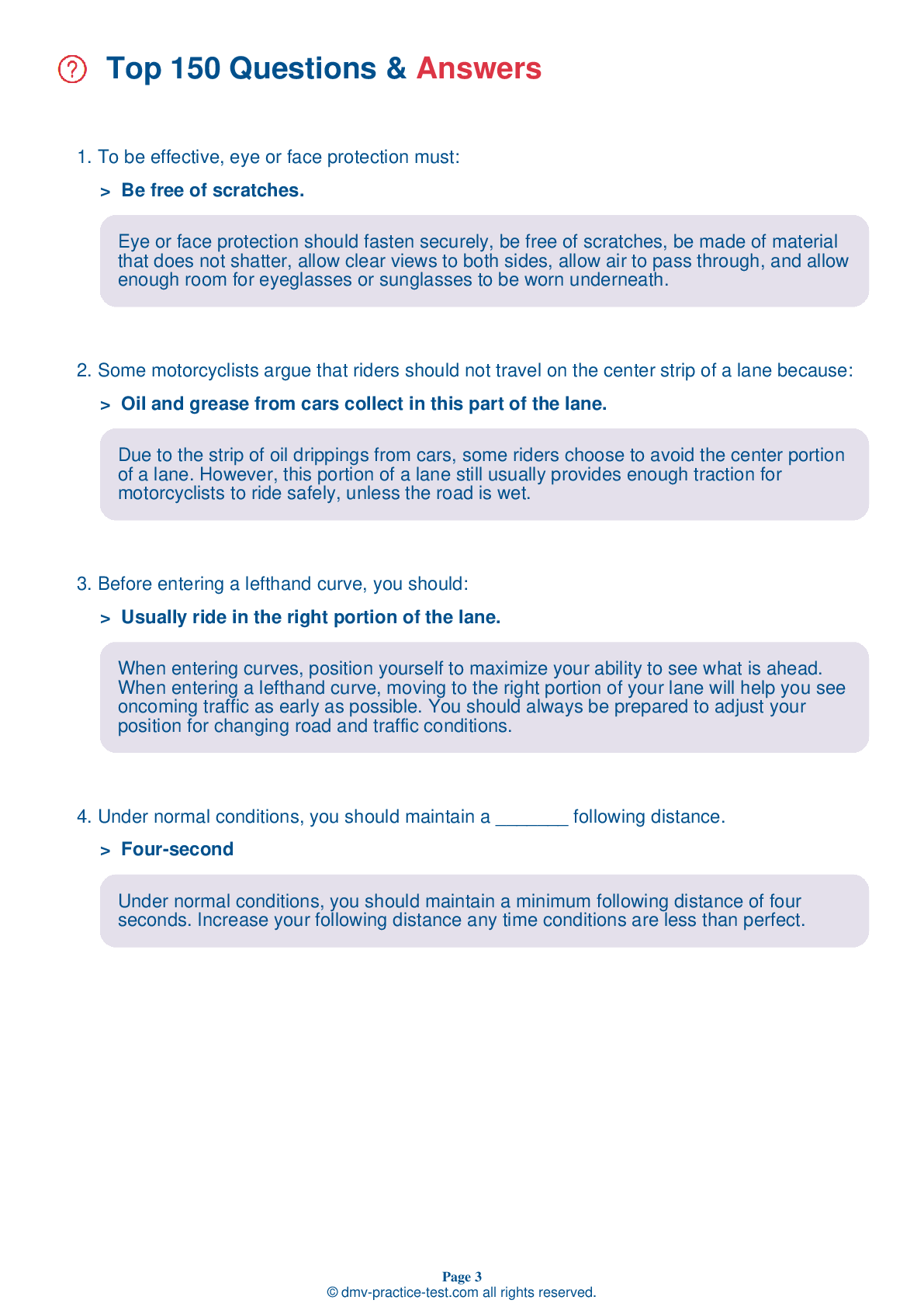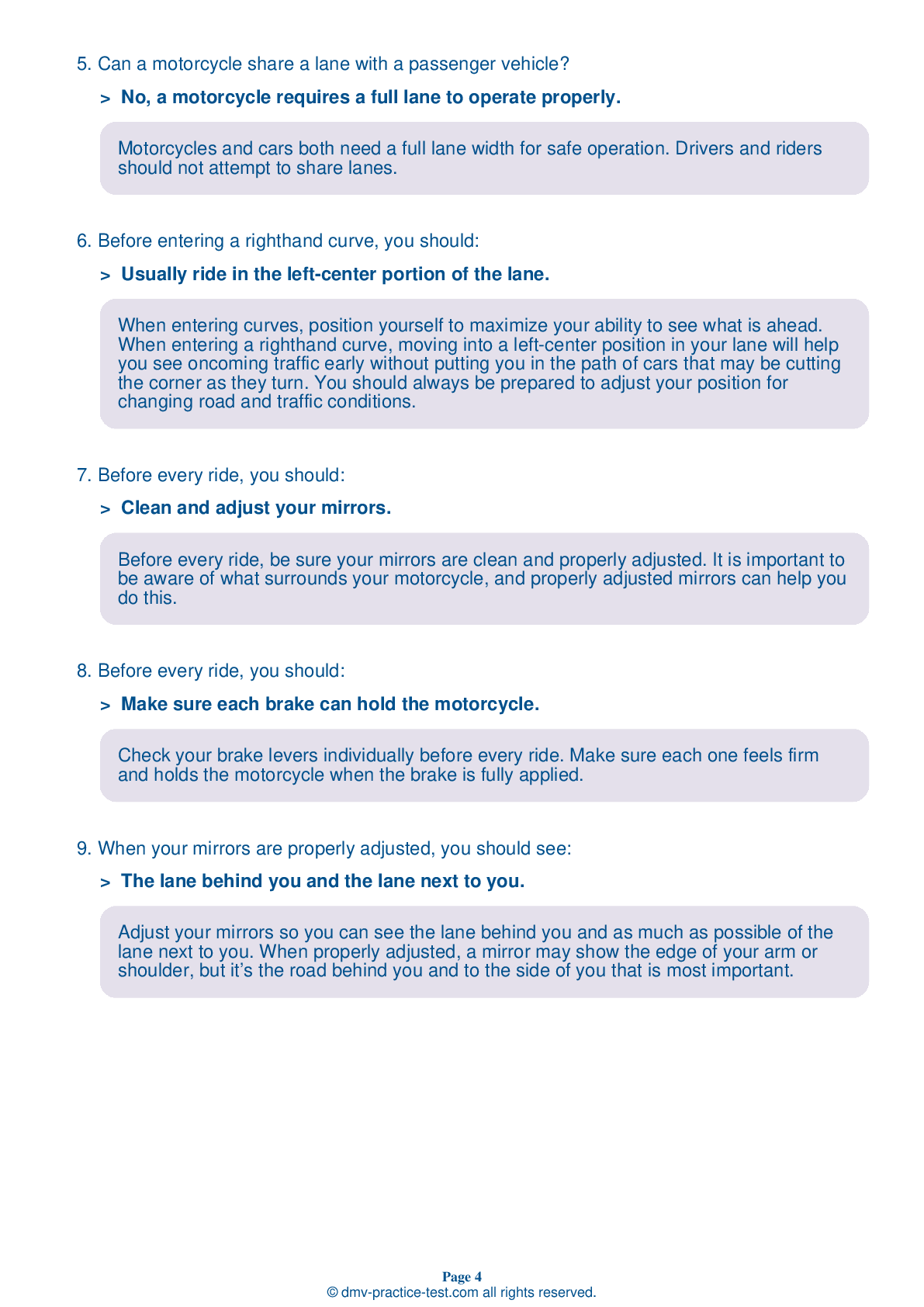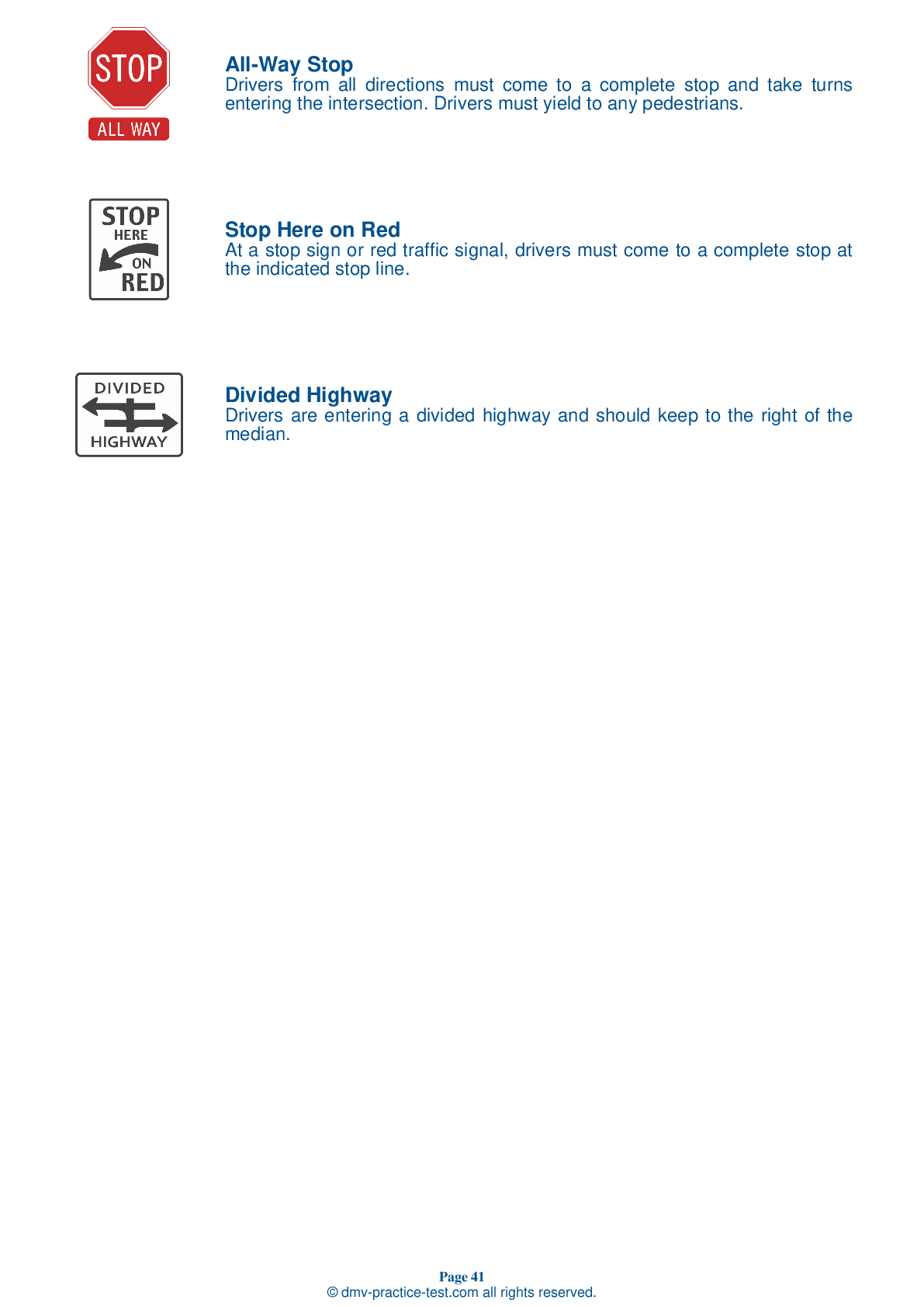Motorcycle Test | License AK 2025 | FREE Online Practice! #6 Page 2 of 4
Take this FREE motorcycle test (license in AK 2025) to check your knowledge of the road rules. To improve your results, download a motorcycle handbook online, study theory, and practice for free on our website. Still worried about how to get a motorcycle license in Alaska in 2025? Check our website for more sample tests, train as much as possible, and boost your grades!
7 . When in traffic, motorcycles need:
In traffic, a motorcycle needs as much distance to stop as a car does.
8 . When changing lanes on a road with several lanes, you should:
Before changing lanes, be sure to check for traffic in your blind spot by looking over your shoulder in the direction of your move. On a road with several lanes, check the far lane as well as the lane next to you before moving. A driver in the far lane may be headed for the same space you plan to take.
9 . Before mounting your motorcycle, perform all of the following checks, except:
Before riding, you should check the pressure and condition of your tires; check the oil and fluid levels; and make sure that the low beam headlight, high beam headlight, taillight, signal lights, and brake light all work properly.
10 . When you are being passed from behind, you should:
When you are being passed from behind, stay in the center portion of your lane. This will discourage the other driver from re-entering your lane before it is safe.
11 . If you are unable to avoid hitting an object in the roadway, you should:
If you cannot avoid hitting an obstacle in the roadway, you should try to hit it at as close to a 90-degree angle as possible. Slow down as much as you can before contact, keep your motorcycle upright, rise slightly off of your seat, and roll the throttle slightly to lighten the front end just before impact.
12 . The front brake supplies how much of a motorcycle's stopping power?
The front brake of a motorcycle is more powerful than the rear brake. It can provide three-fourths of the bike's total stopping power.
See the exact questions that will be on the 2025 Alaska DMV exam.
99.2% of people who use the cheat sheet pass the FIRST TIME
Jeneen was tired of paying $5/gallon. She got herself a scooter that required the motorcycle license. She studyed the motorcycle test cheat sheet and passed her test the next day!
Christopher tells us how he knew nothing prior to obtaining the motorcycle study guide, and he only got one question wrong because he clicked on the wrong answer by mistake.



